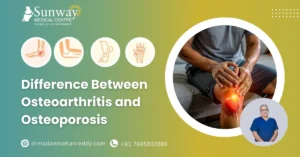Hip pain can restrict mobility and impact daily life, making proper management essential. While staying active helps, understanding hip pain exercises to avoid is crucial, as certain movements can worsen inflammation and strain. High-impact workouts, improper stretching, and excessive pressure on the joint often trigger discomfort. Choosing low-impact routines and hip-friendly yoga can support healing without adding stress. Maintaining correct posture, especially while sitting, also plays a key role in reducing hip pain.

Understanding Causes of Hip Pain
- Hip pain can result from various conditions, including arthritis, bursitis, muscle strains, and hip labral tears. It affects people of all ages and fitness levels, making it essential to understand its causes and impact.One of the leading causes of hip pain is overuse. Engaging in high-impact exercises without proper conditioning can strain the hip joint. In some cases, tight hip flexors or weak glute muscles contribute to instability, leading to discomfort. That’s why incorporating hip pain yoga exercises is recommended, as they improve flexibility and reduce tension.
- Another crucial factor is posture. Poor posture while sitting or exercising can aggravate hip pain. Learning how to sit to avoid hip pain helps reduce stress on the hip joint, preventing further complications. Sitting with proper spinal alignment and using supportive seating can make a significant difference. If you are wondering, “can I exercise with hip pain?” the answer is yes, but with caution. Low-impact movements and low hip exercises can help maintain strength without causing damage.
- However, avoiding high-stress workouts is crucial, which brings us to the next section: hip pain exercises to avoid.
Exercises to Avoid If You Have Hip Pain
Some movements put excessive stress on the hip joint or surrounding muscles. If you’re experiencing pain or stiffness, it’s best to pause or modify the following exercises:
1. Deep Squats and Lunges
These exercises involve deep bending and can compress the hip joint. For someone with joint inflammation or bursitis, this can make things worse instead of better.
2. High-Impact Activities (Jumping, Running, Burpees)
Jumping jacks, plyometrics, and long runs may jar the hips, especially on hard surfaces. This repeated impact can aggravate hip joints and inflame surrounding tissue.
3. Leg Raises with Poor Control
Lying leg raises may seem safe, but when done incorrectly, they overwork the hip flexors especially if core strength is lacking. This can strain the front of the hip and increase tension.
4. Twisting or Deep-Stretch Yoga Poses
While yoga is generally healing, certain poses like pigeon, deep warriors, or bound twists may overstretch sensitive areas. If you’re looking for hip pain yoga exercises, choose gentle and supportive poses instead.
5. Cycling with a Low Seat or Incorrect Form
Extended time on a bike with poor posture or low saddle height can stress the hip flexors and lead to pain. Small adjustments make a big difference.These are some of the most common hip pain exercises to avoid but everyone’s body is different. If something hurts or feels wrong, it’s okay to step back and reassess.
Alternative Exercises for Hip-Friendly Workouts
If you suffer from hip pain, there are safer ways to stay active. Here are some effective alternatives:
- Swimming and Water Aerobics: Low-impact movements that reduce joint stress.
- Seated Resistance Band Exercises: Strengthen muscles without excess strain.
- Glute Bridges: A great alternative to squats for activating hip muscles.
- Seated Yoga Poses: Gentle hip pain yoga exercises improve flexibility.
- Standing Leg Lifts: Strengthen the hips while maintaining stability.
- Stationary Cycling: A great alternative to running for cardiovascular fitness.
By following these alternatives, you can stay active while preventing further discomfort. Madan Mohan Reddy emphasizes choosing hip-friendly workouts and being mindful of hip pain exercises to avoid to maintain long-term joint health..
Tips for Managing Hip Pain During Workouts
Staying active with hip pain requires modifications and awareness. Below are expert tips to ensure pain-free workouts while being mindful of hip pain exercises to avoid for better joint health and mobility:
1. Warm-Up Properly
- Perform gentle stretches before exercise to reduce stiffness.
- Include hip pain yoga exercises like butterfly stretches.
2. Use Proper Footwear
- Shoes with proper arch support help reduce hip pressure.
3. Modify High-Impact Movements
- Replace running with swimming or elliptical training.
- Prioritize low hip exercises to build strength safely.
4. Pay Attention to Posture
- Poor posture can worsen hip pain during workouts.
- Practice how to sit to avoid hip pain by keeping your spine neutral.
5. Incorporate Strength Training Carefully
- Focus on the glutes and core to support hip stability.
- Avoid heavy weights and high resistance.
6. Rest and Recovery
- Overtraining can aggravate pain. Ensure rest days between workouts.
By following these tips, you can exercise safely while preventing additional discomfort. Madan Mohan Reddy recommends incorporating gradual movements and listening to your body.
Conclusion
Understanding hip pain exercises to avoid is essential for anyone dealing with hip discomfort. High-impact movements, improper stretching, and incorrect posture can worsen the condition, leading to long-term damage. Instead, engaging in hip pain yoga exercises and low hip exercises can provide relief without causing stress to the hip joint.If you’ve been wondering, Can I exercise with hip pain? the answer is yes, but with modifications. Choosing the right workouts and practicing how to sit to avoid hip pain can make a significant difference. Whether you opt for swimming, resistance band exercises, or gentle yoga, maintaining mobility while protecting your hips is key.




